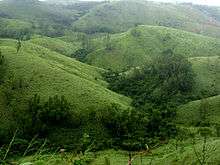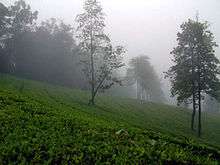List of hill stations in India
The hill stations are high-altitude towns used especially by European colonialists, as a place of refuge to escape the blistering summer heat and dust of plains during the British Raj. They are prevalent in Southeast Asia and the Indian subcontinent, particularly in India.
The Indian subcontinent has seven principal mountain ranges and the largest of all is the Himalayas that lies in the northern part of India. The famous peaks and ranges include the Kangchenjunga range in the Eastern Himalayas which frames the hill stations of Darjeeling and Gangtok as well as the Nanda Devi in Uttarakhand. The Shivalik range that also lies within the same region also has some famous hill stations that include Dalhousie, Kullu, Shimla, Nanital sahyadri and many more.
Most of the hill stations in India were developed by the British around a central mall to get respite from the oppressive summer heat. Many have picturesque lakes as their focal point, making them excellent places for boating activities.
Most of the hill stations in India are located in Jammu and Kashmir, Himachal Pradesh, Uttarakhand, Sikkim, West Bengal, Arunachal Pradesh, Nagaland and Meghalaya in the Himalayas and in Maharashtra, Karnataka, Tamil Nadu and Kerala in Western ghats.[1] Some are located in Eastern ghats Andhra Pradesh, Odisha.Some of the hill stations in India are listed below by state.
Since a number of these hill stations attract large number of tourists in summer as well as other times of the year,they are well connected by rail, road and air services to major Indian cities.
History
Hill stations in India were established for a variety of reasons. After the revolt of 1857 the "British sought further distance from what they saw as a disease-ridden land by escape to the Himalayas in the north and Nilgiri Hills in the south", a pattern which started even before 1857. Other factors included anxieties about the dangers of life in India, among them "fear of degeneration brought on by too long residence in a debilitating land." The hill stations were meant to reproduce the home country, illustrated in Lord Lytton's statement about Ootacamund, in the 1870s, "such beautiful English rain, such delicious English mud."[2] Shimla was officially made the "summer capital of India" in the 1860s and hill stations "served as vital centers of political and military power, especially after the 1857 revolt."[3]:2
Dane Kennedy, following Monika Bührlein, identifies three stages in the evolution of hill stations in India: high refuge, high refuge to hill station, and hill station to town. The first settlements started in the 1820s, primarily as sanitoria. In the 1840s and 1850s, there was a wave of new hill stations, with the main impetus being "places to rest and recuperate from the arduous life on the plains". In the second half of the 19th century, there was a period of consolidation with few new hill stations. In the final phase, "hill stations reached their zenith in the late nineteenth century. The political importance of the official stations was underscored by the inauguration of large and costly public-building projects."[3]:14
.
Andhra Pradesh
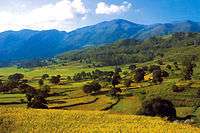
Arunachal Pradesh
Assam
Bihar
Chhattisgarh
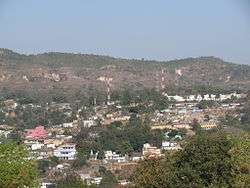
Gujarat
Haryana
Himachal Pradesh


- Baijnath
- Barog
- Bir-Billing Paragliding Site
- Chail
- Chamba
- Chitkul
- Churdhar Sanctuary
- Dalhousie
- Dharamkot
- Dharamshala
- Haripurdhar
- Jogindernagar
- Kalpa
- Kangra
- Kasauli
- Keylong
_%2C_Chamba%2C_Himachal_Pradesh.jpg)

[[|thumb|Tattapani]]
- Thaneek Pura
- Triund
- Tattapani
- Hara Boi
- Mahu Nag
Jammu and Kashmir
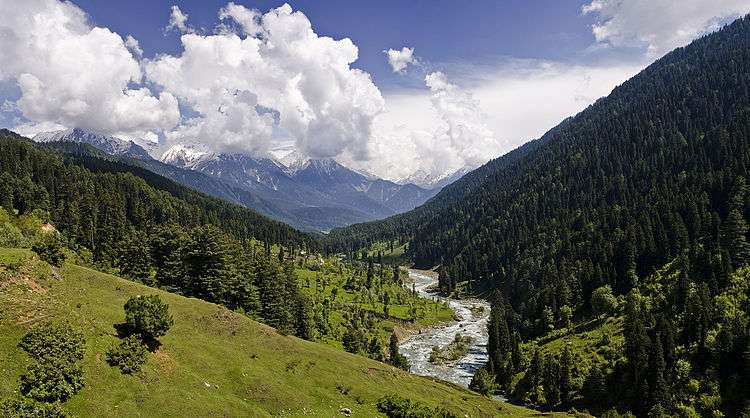

Jharkhand
Karnataka
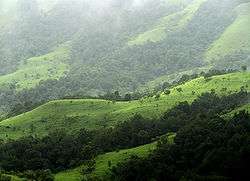
- Agumbe, Shimoga District (Elevation 643 m)
- Baba Budan Giri, Chikkamagaluru District (1895 m)
- Biligiriranga Hills, Chamarajanagar District (1200 m)
- Chikkamagaluru, Chikkamagaluru District (1100 m)
- Jogimatti, Chitradurga District (1,159 m)
- Kemmangundi, Chikkamagaluru District (1434 m)
- Kodachadri, Shimoga District (1343 m)
- Kudremukh Peak, Chikkamagaluru District (1894 m)
- Madikeri, Kodagu District (1170 m)
- Male Mahadeshwara Hills, Chamarajanagar District (900 m)
- Mudigere, Chikkamagaluru District (970 m)
- Mullayanagiri, Chikkamagaluru District (1925 m)
- Nandi Hills, Chikkaballapur district (1478 m)
- Pushpagiri (Kumara Parvatha), Kodagu district (1712 m)
- Sakleshpur, Hassan district (933 m)
- Somwarpet, Kodagu District (1027 m)
- Virajpet, Kodagu District (909 m)
Kerala
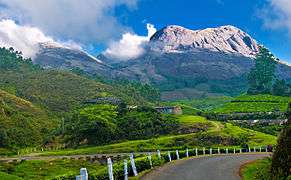
- Achenkovil, Pathnamthitta District
- Agali, Palakkad District
- Agasthiyamalai Thiruvanathapuram District
- Ambanad Hills, Kollam District
- Ambalavayal, Wayanad District
- Arimbra Hills, Malappuram, Malappuram District
- Anakkampoyil, Kozhikode District
- Anchuruli,Idukki District
- Aralam, Kannur District
- Anakkara, Idukki District
- Amboori, Thiruvanathapuram District
- Aryankavu, Kollam District
- Athirapally, Thrissur District
- Ayyampuzha, Ernakulam District
- Ayyankunnu, Wayanad District
- Banasura Hill , Wayanad District
- Bison Valley Idukki District
- Bonacaud , Thiruvanathapuram District
- Brimore, Thiruvanathapuram District
- Chadayamangalam, Kollam District
- Charalkunnu, near Kozhencherry in Pathanamthitta District
- Chathurangappara, Idukki District
- Cheemeni , Kasargod District
- Chinnakanal, Idukki District
- Chittar, Pathanamthitta District
- Chokkad, Malappuram District
- Cumbum mettu Idukki District
- Devikulam, Idukki District
- Dharmathadka, Kasargod District
- Edakkal Caves, Wayanad District
- Elapeedika, Kannur District
- Elappara, Idukki District
- Ezhimala, Kannur District
- Gavi, near Sabarimala in Pathanamthitta District
- Ilaveezha Poonchira , Idukki District
- Illikkal Kallu , Kotayam District
- Iritty, Kannur District
- Josegiri, Kannur District
- Kakkadampoyil, Kozhikode District
- Kallar, Thiruvanathapuram District
- Kalpetta, Wayanad District
- Kambilikandam, Idukki District
- Kanthalloor, Idukki District
- Karapuzha Dam , Wayanad District
- Kattappana, Idukki District
- Kinnakorai, Palakkad District
- Kulamavu Dam, Idukki District
- Kulathupuzha, Kollam District
- Kodanad, Ernakulam District
- Kodencheri, Kozhikode District
- Kodikuthimala Malappuram District
- Konni Pathnamthitta District
- Koorachundu, Kozhikode District
- Kottakamboor, Idukki District
- Kottancheri Hills, Kasaragod District
- Kottiyoor, Kannur District
- Kulathupuzha, Kollam District
- Kumily, Idukki District
- Kurumbalakotta, Wayanad District
- Kuttampuzha, Ernakulam District
- Kuttikkanam, Idukki District
- Lakkidi, Wayanad District
- Madayipara, Kannur District
- Malakkappara, Thrissur District
- Malampuzha, Palakkad District
- Malayattur, Ernakulam District
- Malom , Kasargod District
- Mananthavady, Wayanad District
- Maniyar, near Sabarimala in Pathanamthitta District
- Mannarkkad, Palakkad District
- Marayoor, Idukki District
- Mattupetty, Idukki District
- Melukavu, Kotayam District
- Meppadi, Wayanad District
- Moolamattom, Idukki District
- Mulli, Palakkad District
- Muthalamada, Palakkad District
- Mundakayam, Kottayam District
- Munnar, Idukki District
- Muthanga, Wayanad District
- Nedumkandam, Idukki District
- Nelliampathi, Palakkad District
- Nilambur, Malappuram District
- Padavayal, Palakkad District
- Painavu, Idukki District
- Pakshi Pathalam, Wayanad District
- Palakkayam Thattu , kannur district
- Palkulam Medu, Idukki District
- Panchalimedu, Idukki district
- Parambikulam, Palakkad District
- Parunthumpara, Idukki District
- Pathanamthitta Pathanamthitta District
- Peermade, Idukki District
- Perambra, Kozhikode District
- Peruvannamuzhi, Kozhikode District
- Ponmudi, Thiruvananthapuram District
- Poomala , Thrissur District
- Poonjar, Kottayam District
- Ramakkalmedu, Idukki District
- Ranipuram, Kasaragod District
- Ranni , Pathnamthitta District
- Rosemala, Kollam District
- Santhanpara, Idukki District
- Seethathode, near Sabarimala in Pathanamthitta District
- Soordelu Hill Station, Kasargod District
- Sulthan Bathery, Wayanad District
- Suryanelli, Idukki District
- Teekoy, Kotayam District
- Thamarassery, Kozhikode District
- Thattekkad, Ernakulam District
- Thekkady, Idukki District
- Thenmala, Kollam District
- Thiruvambadi, Kozhikode District
- Thodupuzha, Idukki District
- Thonikadavu, Kasargod District
- Thusharagiri, Kozhikode District
- Tirunelli, Wayanad District
- Udumbanchola, Idukki District
- Vagamon, Idukki District
- Vaithalmala, Kannur District
- Vandiperiyar, Idukki District
- Vaduvanchal, Wayanad District
- Vandanmedu, Idukki District
- Vattavada, Idukki District
- Vayalada, Kozhikode District
- Vazhachal, Thrissur District
- Vazhichal , Thiruvanathapuram District
- Vazhikkadavu, Malappuram District
- Vellarimala, near Thiruvambady in Kozhikode District
- Vengara, Malappuram District
- Vettilappara, Malappuram District
- Vithura, Thiruvananthapuram District
- Vythiri, Wayanad District
- Walayar , Palakad District
Madhya Pradesh
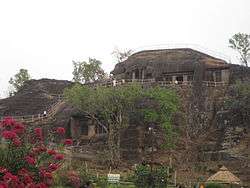
- Amarkantak
- Pachmarhi
- Tamiya
Maharashtra
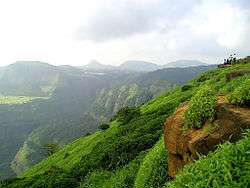
Manipur
- Kaina Hill Station
- Kangchup Hill
- Langthabal
- Maibam Lokpa
Meghalaya
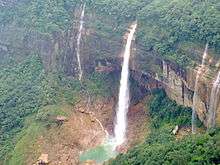
Mizoram
Nagaland
Odisha
Punjab
Rajasthan
Sikkim
Tamil Nadu
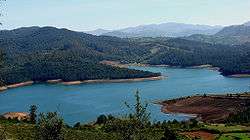
- Anaikatti, Coimbatore district
- Bargur hills, Erode district
- Coonoor, Nilgiris district
- Gudalur, Nilgris district
- Hasanur, Erode district
- Highwavys, Theni district
- Javadi Hills, Tiruvannamalai and Vellore districts
- Kadambur hills, Erode district
- Kalrayan Hills, Villupuram and Salem districts
- Kilkunda, Nilgris district
- Kodaikanal, Dindigul district
- Kodayar hills, Kanyakumari district
- Kolli Hills, Namakkal district
- Kolukkumalai, Theni district
- Kotagiri, Nilgiris district
- Kurangani, Theni district
- Manjolai, Tirunelveli district
- Vellimalai hills, Theni district
- Mundanthurai, Tirunelveli district
- Pachaimalai Hills, Tiruchirappalli district
- Pachalur, Dindigul district
- Palamalai hills, Salem district
- Panrimalai, Dindigul district
- Perumparai, Dindigul district
- Sirumalai, Dindigul district
- Topslip, Coimbatore district
- Udhagamandalam or Ooty, Nilgiris district
- Valparai, Coimbatore district
- Vathalmalai, Dharmapuri district
- Yelagiri, Vellore district
- Yercaud, Salem district
Telangana
Tripura
Uttarakhand
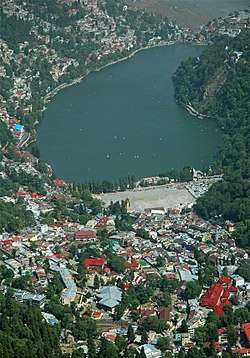
.jpg)
- Almora
- Askot
- Auli
- Badrinath
- Bageshwar
- Berinag
- Bhimtal
- Bhowali
- Binsar
- Chakrata
- Chamoli
- Champawat
- Chaukori
- Chopta
- Dehradun
- Dhanaulti
- Dharchula
- Didihat
- Dwarahat
- Gangolihat
- Gangotri
- Gopeshwar
- Gwaldam
- Harsil
- Hemkund Sahib
- Jageshwar
- Jagtoli
- Jeolikot
- Joshimath
- Kanatal
- Kausani
- Kedarnath
- Khirsu
- Landour
- Lansdowne
- Lohaghat
- Marchula
- Mukteshwar
- Munsiyari
- Mussoorie
- Nainital
- New Tehri
- Pangot
- Patal Bhuvaneshwar
- Pauri
- Pithoragarh
- Raiagar
- Ramgarh
- Ranikhet
- Rishikesh
- Rudraprayag
- Rudrapur
- Uttarkashi
- Valley of Flowers
- Yamunotri
West Bengal
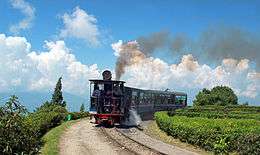
References
- ↑ http://travelfiver.com/5-best-palaces-to-visit-in-rajasthan/
- ↑ Barbara D. Metcalf; Thomas R. Metcalf (2002). A Concise History of India. Cambridge University Press. p. 111. ISBN 978-0-521-63974-3.
- 1 2 Kennedy, Dane (1996). The Magic Mountains: Hill Stations and the British Raj. Berkeley: University of California Press. Retrieved 19 Aug 2014.
| Wikimedia Commons has media related to Hill stations in India. |
